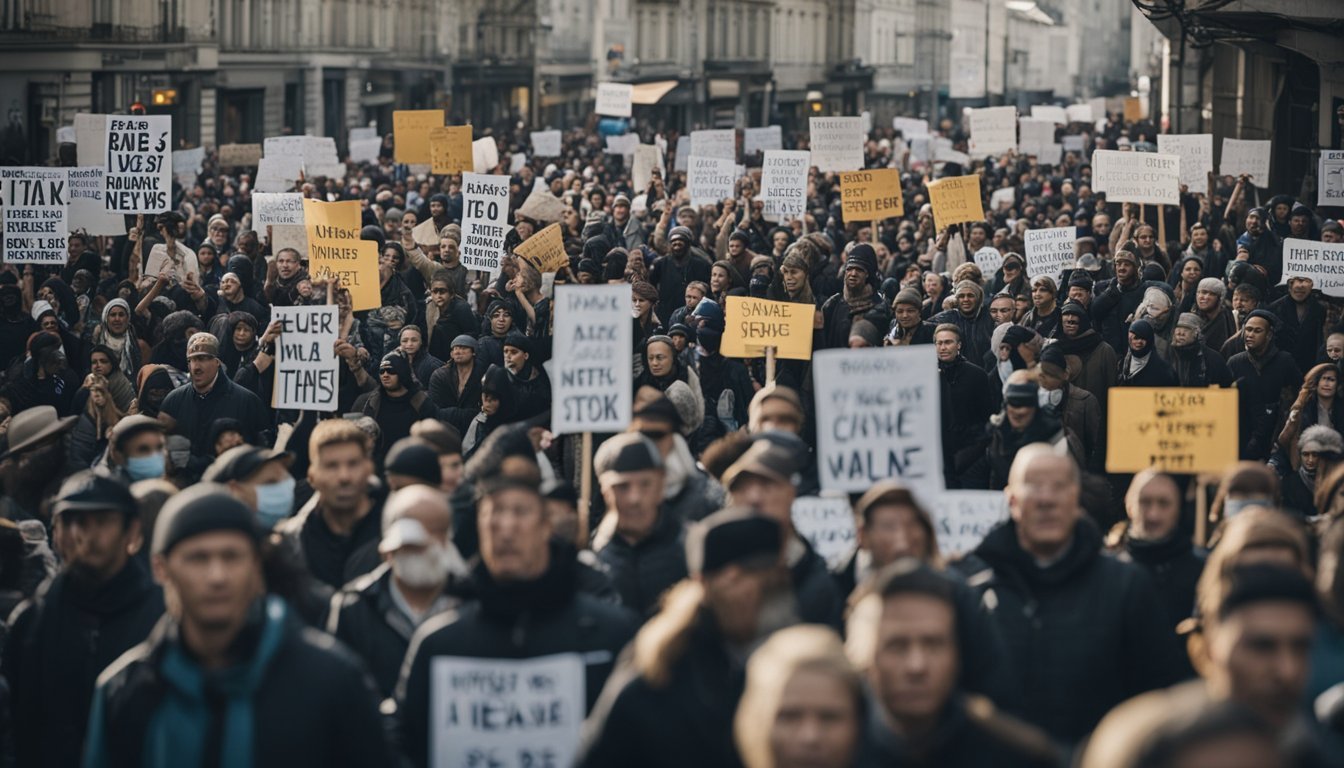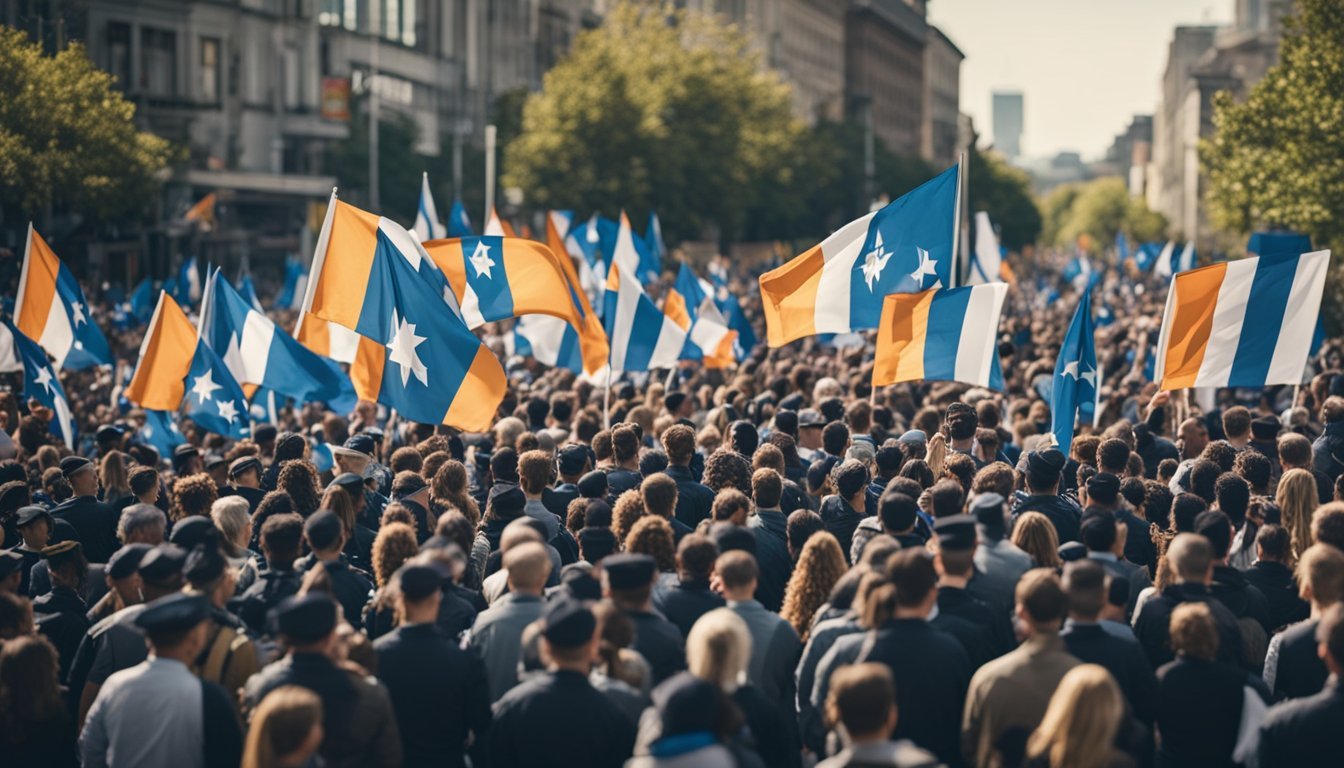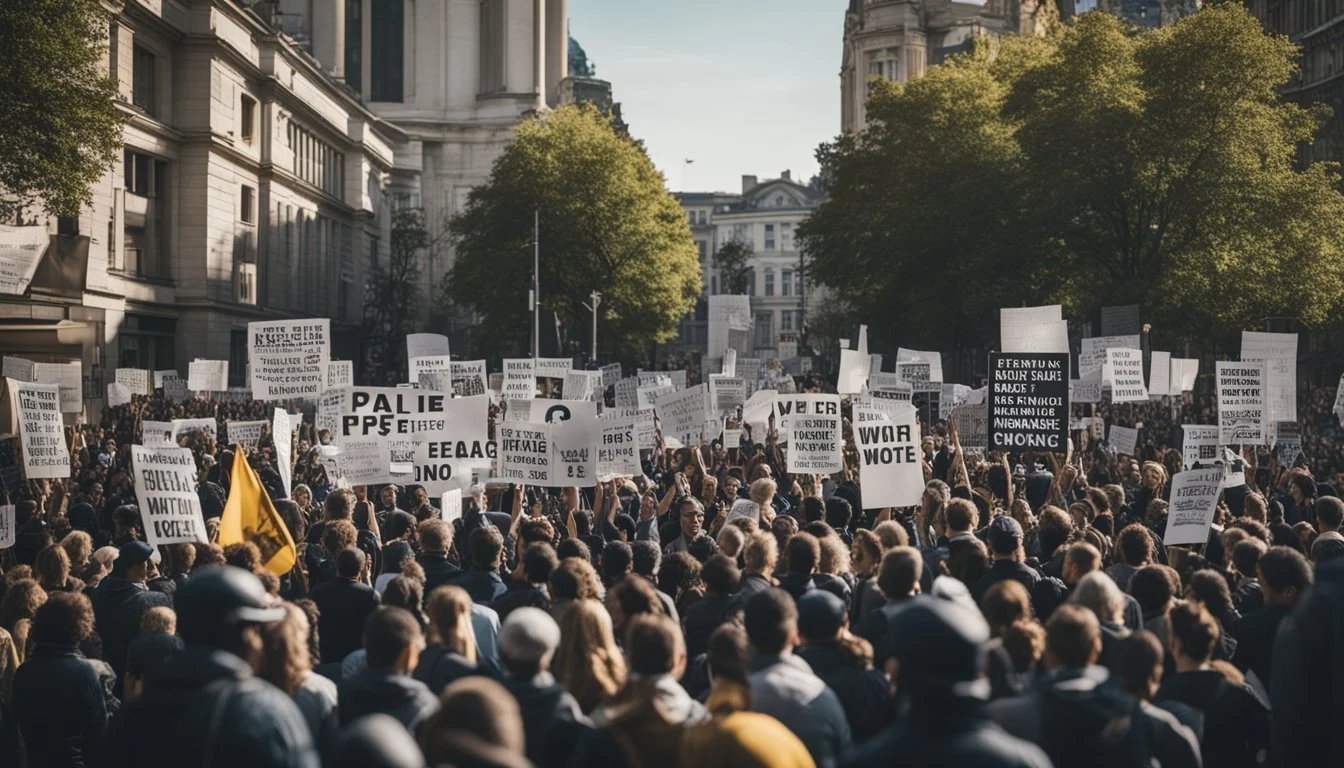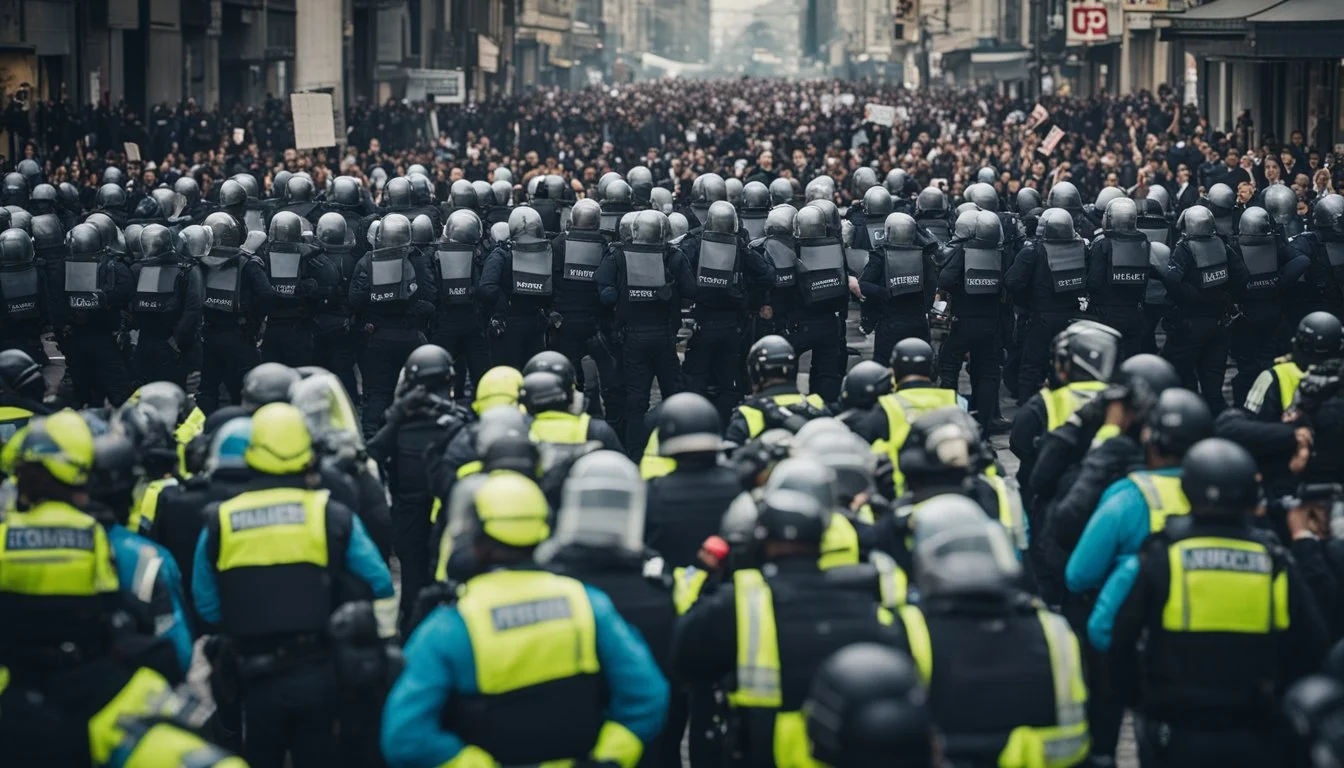8 Documentaries on Political Protests
Essential Viewing for Understanding Civil Movements
Examining the power and impact of political protests through documentaries offers an insightful lens into the social and political transformations that shape our society. These films capture the essence of grassroots movements, often reflecting on the courage and determination of individuals fighting for change. By watching these documentaries, viewers gain a deeper appreciation of the obstacles and achievements tied to pivotal moments in history.
Documentaries about political protests not only chronicle events but also humanize the stories of those involved, providing a more nuanced view of complex issues. They serve as an engaging educational tool, revealing how collective action can influence legislation and societal norms.
1) Winter on Fire: Ukraine's Fight for Freedom (2015)
"Winter on Fire: Ukraine's Fight for Freedom" is a 2015 documentary film directed by Evgeny Afineevsky. The film captures the events of the Euromaidan protests that took place in Ukraine from November 2013 to February 2014.
The documentary shows the transformation from peaceful student demonstrations to a full-scale revolution. It includes firsthand footage and interviews with protestors, detailing their struggle against the government.
The film highlights the determination of Ukrainians who demanded European integration and the resignation of President Viktor Yanukovych. It showcases the resilience and unity of the protestors amidst escalating violence.
The documentary has been praised for its powerful storytelling and raw depiction of the events. "Winter on Fire" is available for streaming on platforms like Netflix.
2) The Square (2013)
"The Square," directed by Jehane Noujaim, is an influential documentary chronicling the Egyptian Revolution of 2011. It provides a close look at the experiences of activists in Tahrir Square, focusing on their fight against the regime of Hosni Mubarak.
The film showcases the perspectives of various participants, including Khalid Abdalla, an actor, and Magdy Ashour, a member of the Muslim Brotherhood. Their stories highlight the diverse motivations and backgrounds of those involved in the protests.
Jehane Noujaim effectively captures the intense emotional and physical struggles faced by the revolutionaries. The documentary is noted for its raw and immediate depiction of the events, offering viewers an inside look at the highs and lows of the revolution.
"The Square" has received critical acclaim, including an Oscar nomination for Best Documentary Feature. It also won awards at the Sundance and Toronto film festivals.
For more information on "The Square," visit IMDb.
3) Whose Streets? (2017)
"Whose Streets?" offers an unfiltered look at the Ferguson uprising. Directed by Sabaah Folayan and Damon Davis, the documentary captures the raw emotions and determination of the community after the death of Michael Brown.
When unarmed teenager Michael Brown was killed by police, the incident ignited long-standing racial tensions. The film chronicles the protests that erupted and the community's quest for justice.
The documentary shows the power of grassroots activism. It highlights the struggle for civil rights and the impact of social movements on policy and societal change.
"Whose Streets?" brings attention to the residents' resilience and the younger generation's leadership in the fight for justice. It’s a vivid portrayal of real-life activism and its consequences.
For more details, visit the IMDB page.
4) Rebellion
"La Chinoise" (1967)
Jean-Luc Godard's "La Chinoise" is set in Paris and depicts a group of Maoist students who adopt revolutionary tactics. The film satirizes their idealism and the complexities of political rebellion. This work reflects the turbulent political atmosphere of the 1960s. More on IMDb
"Under Fire" (1983)
Directed by Roger Spottiswoode, "Under Fire" follows three journalists caught up in the Nicaraguan revolution. Set during the fall of the Somoza regime, the movie presents a storyline of love, war, and political upheaval. More on IMDb
"Do the Right Thing" (1989)
Spike Lee's "Do the Right Thing" explores racial tensions in a Brooklyn neighborhood. The film climaxes in a riot following the police killing of an African American man. Its powerful portrayal of rebellion amidst racial injustice has made it culturally significant. More on IMDb
"The Battle of Algiers" (1966)
Directed by Gillo Pontecorvo, "The Battle of Algiers" chronicles the Algerian struggle for independence from French colonial rule. Shot in a gripping documentary style, it vividly depicts the brutal tactics used by both sides. More on IMDb
5) The Act of Killing (2012)
"The Act of Killing" is an experimental documentary directed by Joshua Oppenheimer. It explores the Indonesian mass killings of 1965-66, where alleged communists were targeted.
The film revisits these events through the eyes of the perpetrators. They reenact their actions, providing a chilling look into their psyche.
The documentary is unique due to its surreal and unsettling approach. Its impact is profound, offering deep insights into the nature of political violence.
For more information on the film, visit its Wikipedia page.
6) 13th (2016)
Ava DuVernay's documentary 13th examines the history and impact of the Thirteenth Amendment in the United States. This 2016 film explores how the amendment's loopholes allowed systemic racial discrimination to persist through mass incarceration.
The documentary combines archival footage with interviews from activists, scholars, and politicians. It presents a compelling narrative of how these practices have evolved and affected the Black community over time.
DuVernay illustrates the intersection of race, justice, and mass incarceration. The film provides a powerful critique of the U.S. prison system, shedding light on its ongoing consequences.
For more information, visit IMDb or Wikipedia.
7) How to Survive a Plague (2012)
Released in 2012, "How to Survive a Plague" is a compelling documentary that delves into the early years of the AIDS epidemic. Directed by David France, the film centers on the efforts of two activist groups, ACT UP and TAG.
These groups played a crucial role in advocating for the development of effective AIDS treatments. Through never-before-seen archival footage, the documentary captures the intense struggles and emotional experiences of activists fighting to save lives.
The film showcases the harsh realities faced by the LGBTQ+ community during a time of political indifference and widespread fear. It also highlights how grassroots activism can lead to meaningful change, even in the face of overwhelming odds.
Viewers are taken into the heated meetings and controversial actions that marked the era, shedding light on the tireless efforts of those who refused to give up. This documentary serves as both a historical record and a powerful reminder of the impact of civil engagement.
More information can be found here.
8) Pray the Devil Back to Hell (2008)
"Pray the Devil Back to Hell" chronicles the inspiring story of Liberian women who united to end their country's brutal civil war. Directed by Gini Reticker and produced by Abigail Disney, the film captures the remarkable resolve of ordinary women, from various religious backgrounds, who sought peace through nonviolent protest.
The documentary premiered at the 2008 Tribeca Film Festival and earned the award for Best Documentary. It subsequently had a theatrical release in New York City on November 7, 2008.
The narrative interweaves contemporary interviews with archival footage, showcasing the women's unsung efforts. These women include Christian and Muslim mothers, grandmothers, aunts, and daughters, who banded together to demand an end to the violence.
With a worldwide gross of $90,066, this film spotlights the power of peaceful protest in achieving political change. It is an essential view for understanding the impact of women's activism in conflict zones.
Historical Context
Political protests have evolved significantly over time, with each era marked by distinct movements. Various key moments have shaped the way collective actions unfold and their ultimate impact on society.
Evolution of Political Protests
Political protests have ancient roots, with examples found in Roman times where plebeians protested for economic and social rights. The number of protests surged with urbanization and industrialization in the 19th century.
The 20th century saw protests influenced by media, such as the civil rights movement and anti-war demonstrations. Modern technology and social media have further transformed protests, allowing instant global communication and participation, evident in movements like the Arab Spring.
Key Movements and Their Impact
The civil rights movement in the 1960s reshaped American society, leading to significant legislative changes like the Civil Rights Act. Student protests in the 1960s and 1970s also had a substantial impact, advocating for a range of issues from anti-war sentiments to civil rights.
The LGBTQ+ rights movement, ignited by the Stonewall Riots in 1969, led to widespread societal and legislative changes. More recently, the Black Lives Matter movement has highlighted racial injustices and influenced policy debates globally, pushing for police reforms and greater accountability.
Themes and Messages
Documentaries on political protests often explore themes of social justice, equality, and criticism of government and policy. These films aim to educate and inspire viewers by shedding light on the motivations behind mass movements and the impact of collective action.
Social Justice and Equality
These documentaries highlight the struggle for social justice and equality through the lens of historical and contemporary protests. For example, films like Whose Streets? focus on the Ferguson protests, emphasizing the fight against racial inequality and police brutality. Such documentaries use personal narratives to underscore the human cost of injustice, weaving in stories of individuals affected by systemic failings.
Archival footage and testimonials provide a raw glimpse into the societal issues at play. The goal is often to evoke empathy and drive home the universal desire for dignity and equal treatment. By documenting these movements, filmmakers aim to keep the conversation about social justice in the public eye.
Government and Policy Critique
Documentaries in this genre also offer a critical examination of governments and their policies. For instance, We're Not Broke addresses wealth inequality and exposes the ways in which corporate tax evasion affects public policy and governance. Films like Fight the Power: The Protests That Changed America examine the historical impact of protests on government actions and legislative changes.
These films often feature expert analysis and historical contexts to critique policy decisions and governmental responses. By scrutinizing these elements, they provide a comprehensive view of the systemic issues that catalyze protests. This critique offers viewers a deeper analysis of how specific policies and governance structures contribute to societal unrest.
Filmmaking Techniques in Political Documentaries
Filmmaking techniques in political documentaries vary widely, focusing on narrative structures and the use of archival footage to convey the complexity and impact of social movements.
Narrative Structures
Political documentaries frequently employ diverse narrative structures to shape their stories. One common approach is the chronological narrative, which guides viewers through events in the order they occurred. This technique helps to build a clear timeline and understanding of the political context.
Another popular structure is the thematic approach, where filmmakers group scenes around central themes instead of following a linear timeline. This can highlight recurring issues and connections between various events, offering deeper insights into the political struggle.
Character-driven narratives are also employed, focusing on key individuals within the movement to humanize the story and generate emotional engagement. Examples include personal interviews and following individuals' journeys, providing a more relatable perspective on broader political issues.
Use of Archival Footage
Archival footage is crucial in illustrating the historical context of political movements. By incorporating historical film, photographs, news broadcasts, and other media, documentaries can provide compelling evidence and authenticity.
Films like Ava DuVernay's 13th show how historical clips can underscore systemic issues, connecting past events to contemporary struggles. This technique helps illustrate continuity and change within political movements.
Archival materials often include speeches, protests, interviews, and media coverage from the time. Using these authentic sources, filmmakers construct a vivid and credible portrayal of events that might be difficult to visualize otherwise.
These techniques also include montage sequences, where filmmakers blend various archival clips. This method can create a powerful narrative impact, highlighting the intensity and scale of political protests. Archival footage makes political documentaries more engaging and educational by rooting their stories in documented reality.






